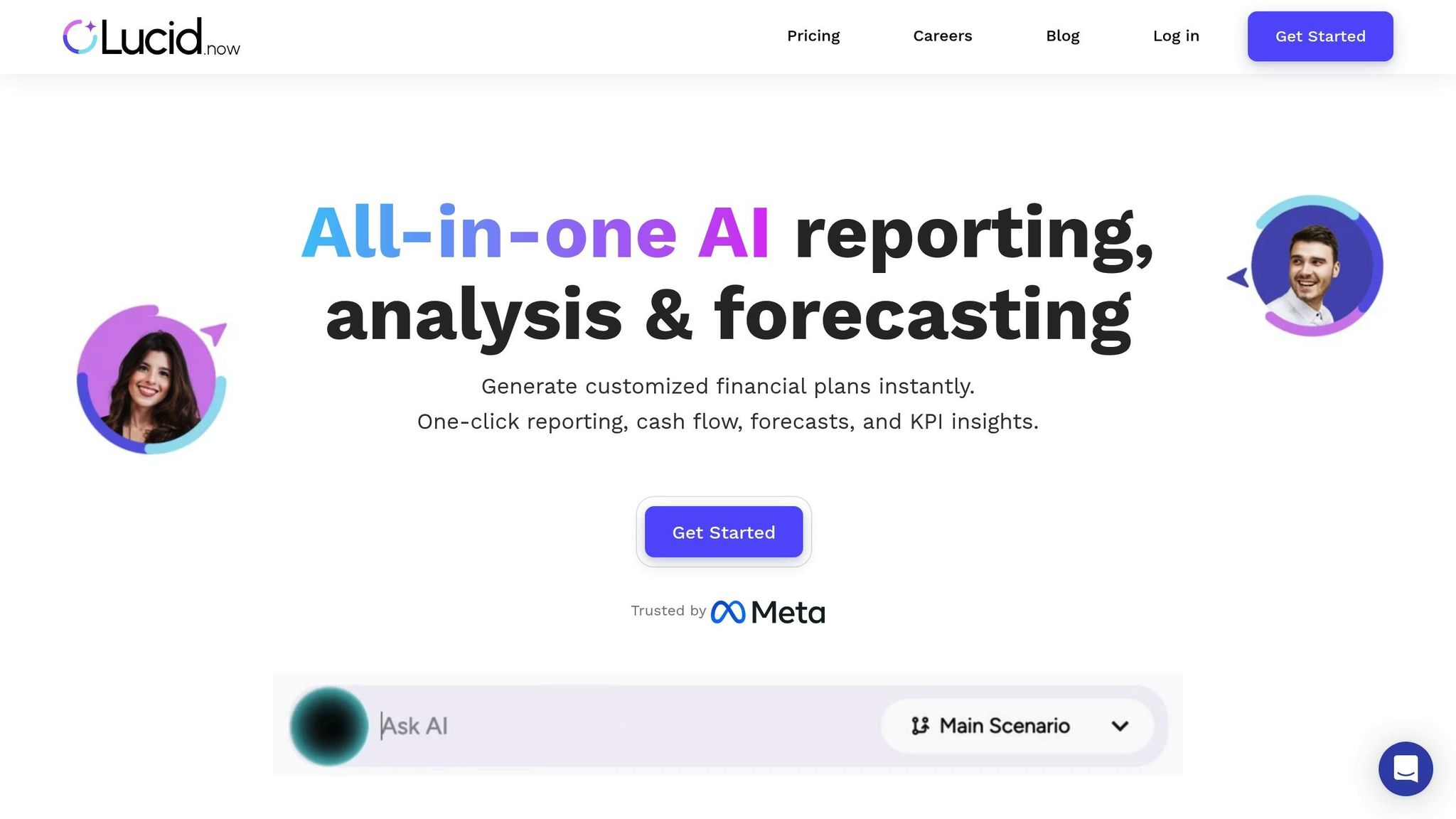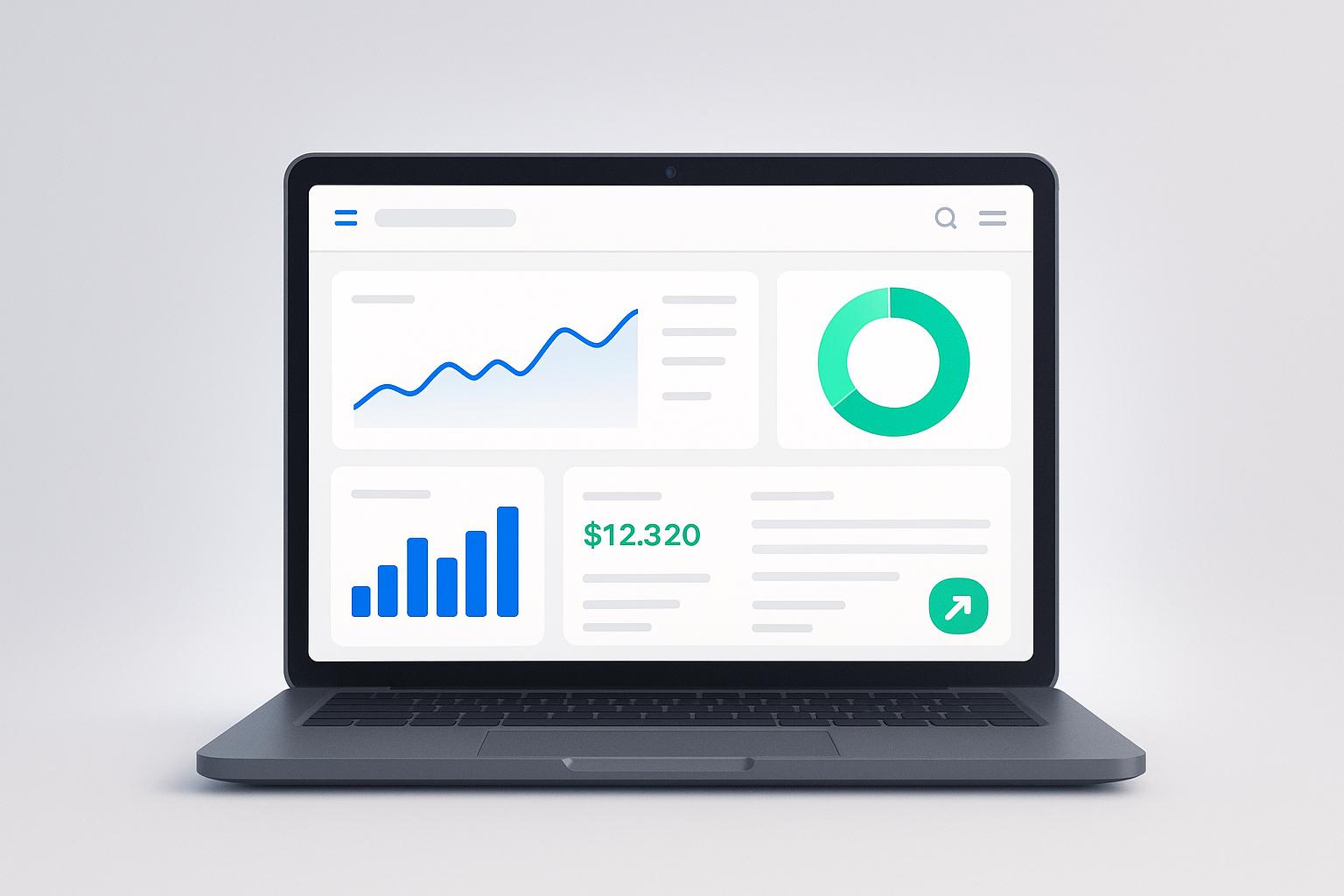Predictive analytics helps businesses sell more by using data to suggest the right products to the right customers at the right time. It analyzes customer behavior, purchase history, and engagement patterns to predict what they’re likely to buy next. This approach increases revenue, improves conversion rates, and boosts customer retention.
Key Takeaways:
- What it does: Predicts customer buying behavior using data like transaction history, product usage, and engagement.
- How it works: Uses tools like pattern recognition, probability scoring, and behavioral triggers to identify upsell opportunities.
- Benefits:
- 20-30% higher upsell conversion rates.
- Personalized offers timed perfectly to customer needs.
- Increased revenue per customer and reduced churn.
- Challenges: Requires accurate data, regular updates, and can be costly to implement initially.
To get started, integrate your CRM and sales data, build a simple prediction model, and test it on a small customer group. Tools like Lucid Financials can help track performance and refine your strategy for better results.
Increasing UPSELL REVENUES Proactively Using Blitz ...
What Makes Predictive Analytics Work in Sales
Predictive analytics uses customer data to forecast purchases, replacing guesswork with data-driven strategies for upselling.
Key Concepts Behind Predictive Analytics
- Pattern Recognition: Algorithms analyze past purchase data to spot trends. For example, if customers often upgrade from a basic software subscription within three months, the system flags these accounts for upsell opportunities.
- Probability Scoring: Each customer is assigned a score that reflects their likelihood to make an additional purchase. This helps prioritize efforts on those most likely to buy.
- Behavioral Triggers: The system tracks specific actions or events - like increased product usage or specific interactions - that often lead to purchases, allowing for well-timed offers.
Now, let’s look at the types of data that fuel these predictions.
Types of Data That Drive Predictions
- Transaction History: Information like purchase dates, amounts spent, and frequency reveals buying habits and customer lifetime value.
- Product Usage: Data on how customers interact with features or tools indicates their readiness for upgrades.
- Customer Demographics: Details like industry, company size, and location help in creating targeted campaigns.
- Interaction Data: Metrics such as email opens, site visits, or support tickets provide insights into engagement and satisfaction.
To keep predictions accurate, ensure high-quality data by auditing records, capturing every customer interaction, and updating models regularly with fresh inputs.
3 Ways Predictive Analytics Drives Sales
Smart Product Recommendations
Predictive analytics improves product recommendations by analyzing a customer's purchase history, browsing habits, and how they use specific features. For instance, Lucid Financials evaluates subscription upgrades and add-on purchases to present offers like priority support when a user hits certain usage milestones. This method increases average order value by providing suggestions that make sense for the customer, instead of offering generic options. Up next, let’s explore how predictive models can pinpoint your top upsell opportunities.
sbb-itb-17e8ec9
4 Steps to Start Using Predictive Analytics
Here's how you can use predictive analytics to boost upsells with these four straightforward steps.
Setting Up Your Data System
Bring your CRM, payment, and support data together on a single platform. Make sure to include key details like transaction history, product usage, and engagement metrics. By consolidating these data sources in Lucid Financials, you’ll get real-time updates and a clear view of customer behavior.
Creating Your First Prediction Model
Start with a prediction model designed to achieve one upsell goal. Here’s how to go from planning to execution:
- Define success metrics: For example, measure upgrade likelihood on a 0–100 scale.
- Identify key variables: Focus on 3–4 factors closely tied to your goal.
- Test and refine: Apply your model to a small customer group, analyze the results, and tweak as needed.
Starting on a smaller scale helps confirm your assumptions. Look for patterns like spending habits or specific feature usage that indicate upsell opportunities.
Using Lucid Financials for Sales Tracking

Take advantage of Lucid Financials' scenario planning tools to evaluate different upsell strategies, predict their outcomes, and keep tabs on revenue and cash flow in real time. With the Professional plan (starting at $150/month), you'll gain access to advanced financial models and unlimited scenario analysis, making it easier to measure your progress toward upselling goals.
Results and Limitations of Predictive Analytics
Main Benefits
Predictive analytics offers measurable gains in upselling performance:
- Higher Conversion Rates: Companies often experience a 20-30% boost in upsell acceptance when leveraging data-driven recommendations.
- Improved Timing: Automated triggers ensure offers are made at the right moment, doubling or tripling response rates.
- Increased Revenue: Personalized suggestions can raise average order values by 15-25%.
- Lower Churn Rates: Identifying at-risk accounts early helps retain 85-90% of potential churners.
Common Problems and Limits
Despite its advantages, predictive analytics has a few challenges:
- Data Quality Matters: Predictions depend heavily on the accuracy and completeness of your input data.
- Limited Sample Sizes: Small customer pools may not provide enough data for reliable insights.
- Market Volatility: Sudden changes in the market can temporarily throw off predictions.
- High Initial Costs: Setting up predictive systems demands a significant investment of time and resources.
Quick Reference Guide
To maximize the impact of predictive analytics:
-
Do:
- Update data sources daily
- Review model accuracy every quarter
- Begin with high-volume products
- Prioritize active customer segments
-
Don't:
- Depend entirely on historical data
- Start with overly complex models
Lucid Financials’ analytics dashboard simplifies tracking upsell performance and revenue impact. Its scenario planning tools allow quick adjustments if prediction accuracy dips, helping maintain consistent results.
Conclusion
Predictive analytics can reshape upselling by providing timely, personalized offers that drive higher conversions and improve customer retention.
"Lucid simplifies tracking, planning, and scaling upsells."
Prioritize accurate data, effective tools, and regular monitoring. By applying the four steps outlined earlier and using Lucid Financials, you can create a reliable stream of upsell revenue.

